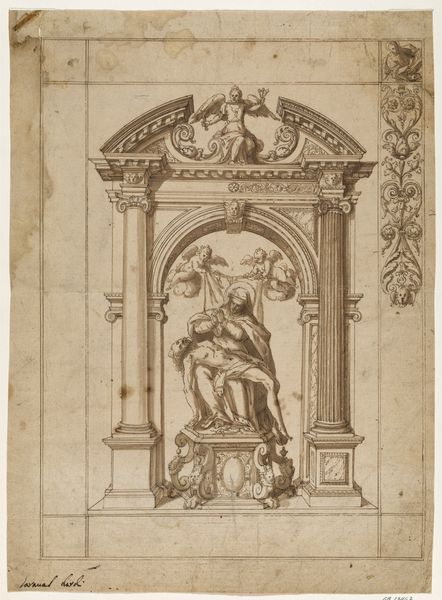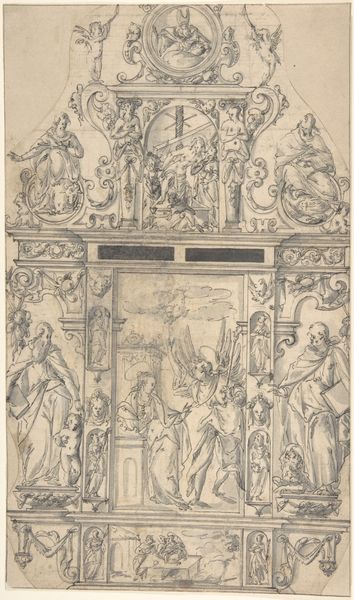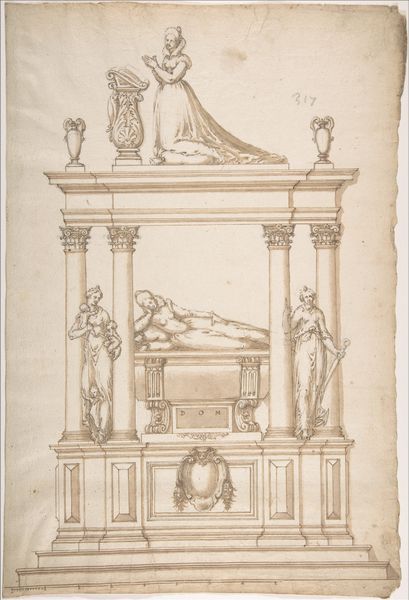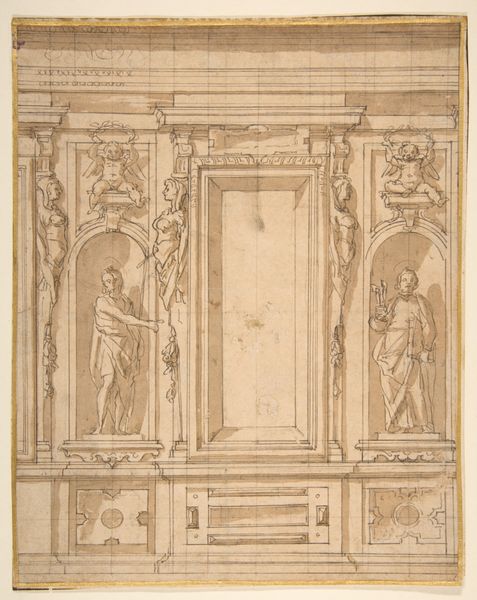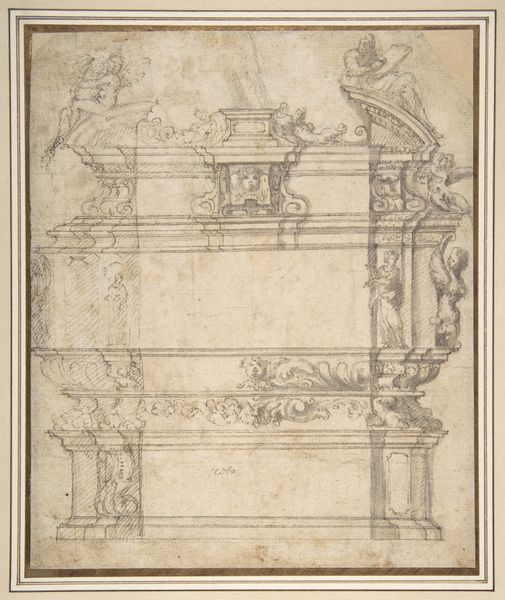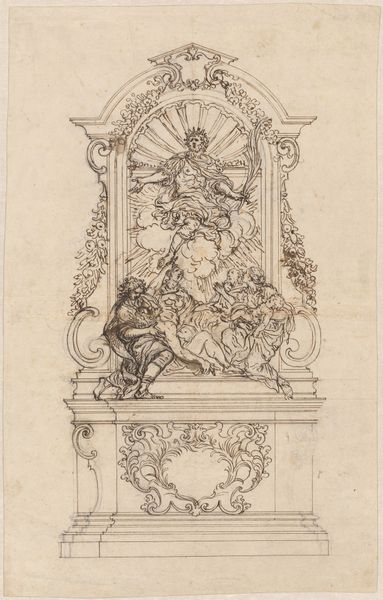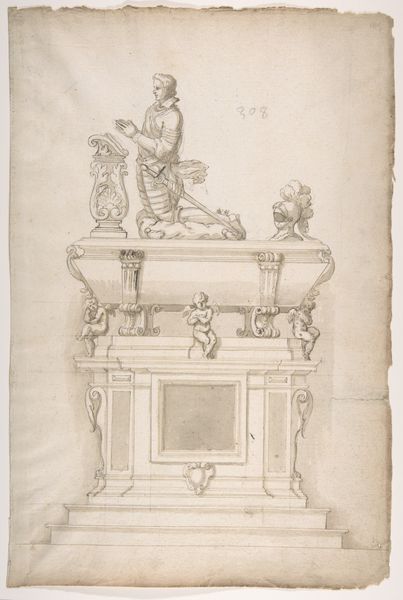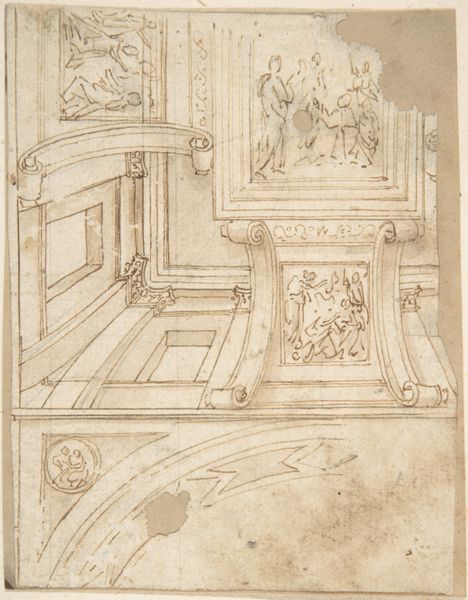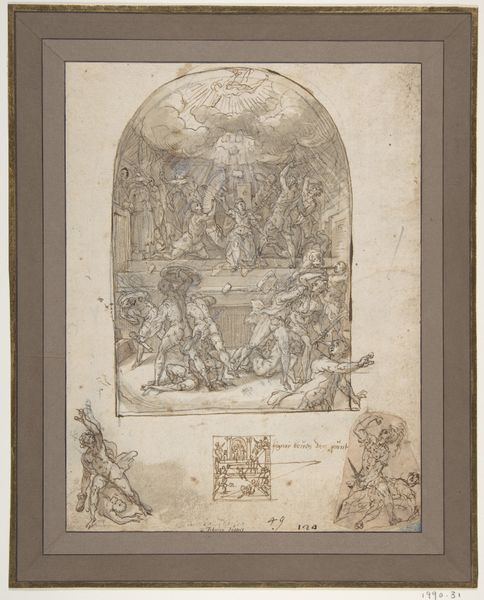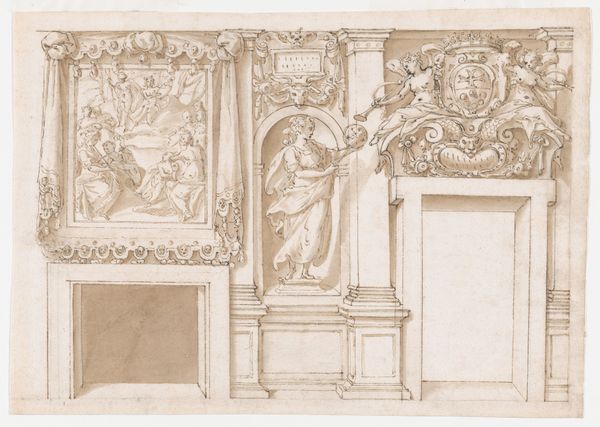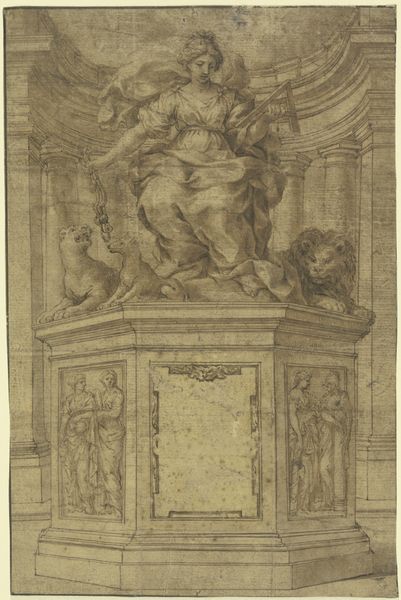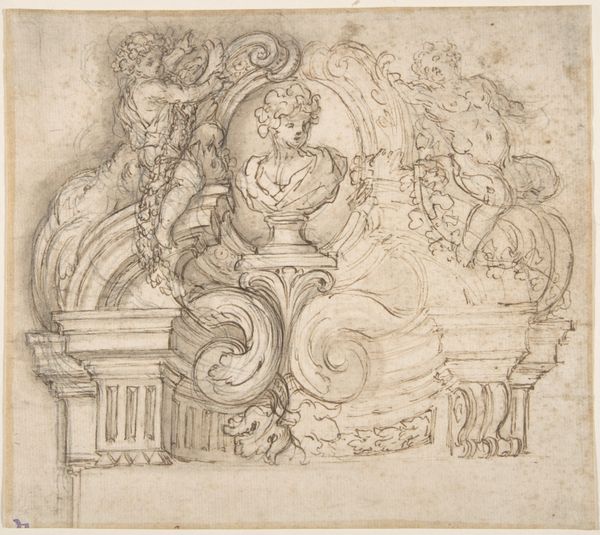
Two men in antique drapery in front of a tomb 1613 - 1673
0:00
0:00
drawing, paper, ink
#
portrait
#
drawing
#
narrative-art
#
baroque
#
landscape
#
figuration
#
paper
#
ink
#
classicism
#
history-painting
#
academic-art
Dimensions: 180 mm (height) x 128 mm (width) (bladmaal)
Curator: Before us we have "Two men in antique drapery in front of a tomb" an ink and paper drawing by François Chauveau, dating from the period of 1613 to 1673. What’s your initial impression? Editor: Somber. The classical architecture seems to swallow the figures. They’re dwarfed by the scale, even as they seem to contemplate the tomb's structure. The lines, while elegant, reinforce the imposing severity of the setting. Curator: It’s intriguing how Chauveau employs classical motifs, not just in the architectural rendering but also in the drapery of the figures. This aesthetic points to a deliberate revival of classical ideals, something we see across Europe during that period, especially in the context of aristocratic patronage. Editor: Agreed. The very deliberate, almost diagrammatic use of ink wash creates depth, highlighting certain features—the folds of the fabric, the faces—yet suppressing others. The composition feels carefully stage-managed, theatrical, almost. Curator: This theatricality is essential. Chauveau’s drawings, more broadly, often served as preparatory sketches for engravings and book illustrations, so constructing a visually compelling scene would have been paramount to ensure narrative clarity in print. It caters to the popular market. Editor: Tell me more about the tomb itself. It's such a striking focal point, crowned with what appears to be a regal figure within a laurel wreath. Curator: That tomb certainly implies the presence of a notable figure. Whether historical or allegorical, this elevates the scene to a lesson, something morally didactic that noble patronage frequently desired. Death, legacy, historical greatness – heavy, heavy concepts. Editor: But there’s also a certain… detachment? The rendering style almost smooths over the gravity of death, turning it into a study of form and composition. Even the mourning figures seem strangely serene. It almost looks decorative. Curator: Well, to conclude, considering the era's artistic conventions, it's likely Chauveau's objective was less to evoke visceral grief and more to construct a visually harmonious representation of reflection on mortality and, frankly, the permanence of societal structures. Editor: So, it’s an eloquent comment on how artistic choices filter profound human themes. An impressive work on both aesthetic and conceptual planes, definitely.
Comments
No comments
Be the first to comment and join the conversation on the ultimate creative platform.
